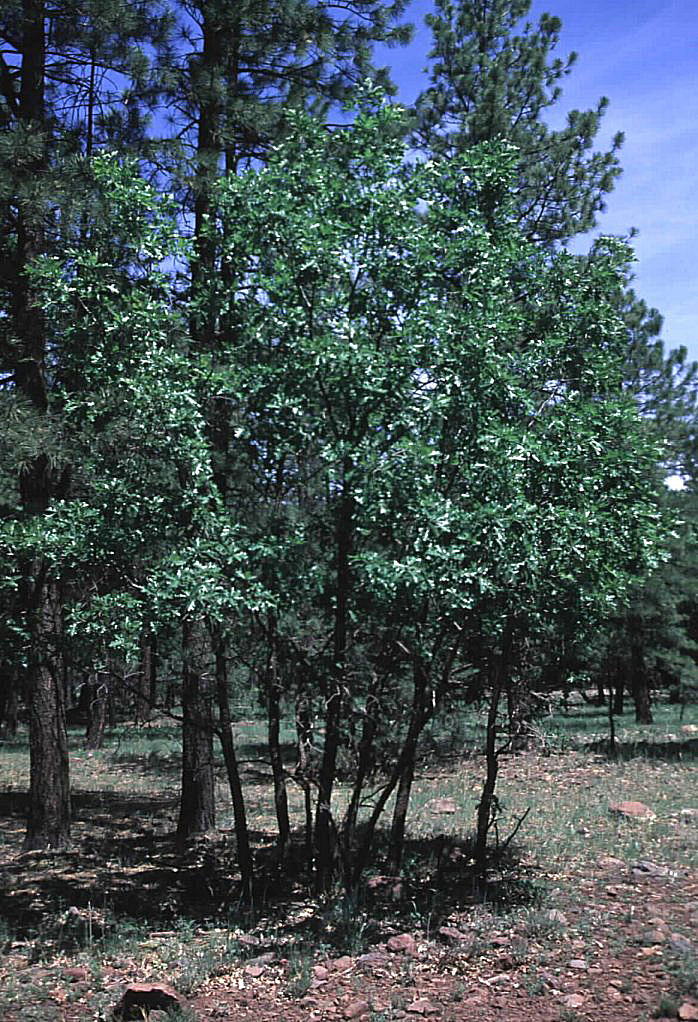| Botanical Name: Quercus gambelii | |
| Common Name: Gambel Oak |

-
Anatomy
-
Culture
-
Design
Plant Type
Tree, Shrub
Height Range
12-25'
Flower Color
Yellow
Flower Season
Spring
Leaf Color
Green, Dark Green
Bark Color
Brown
Fruit Color
Brown
Fruit Season
Summer, Fall
Sun
Full
Water
Very Low, Low
Growth Rate
Moderate, Slow
Soil Type
Sandy, Clay, Loam, Rocky, Unparticular
Soil Condition
Average, Rich, Poor, Well-drained, Dry
Soil pH
Neutral, Basic
Adverse Factors
Messy
Design Styles
Mediterranean, Ranch, Spanish, Woodland
Accenting Features
Fall Color, Multi-trunk Tree, Silhouette
Seasonal Interest
Winter, Summer, Fall
Location Uses
Background, Shrub Border, Patio, Raised Planter, Walls / Fences
Special Uses
Screen, Mass Planting, Shade Tree, Naturalizing
Attracts Wildlife
Birds, Butterflies
Information by: Stephanie Duer
Photographer: Mountain States Nursery
Photographer: Mountain States Nursery
-
Description
-
Notes
Gambel oak is a lovely, deciduous tree native to Utah and the Intermountain West. It grows about 15 to 20 feet tall and wide, as either a multi-stemmed tree or a large shrub, depending on the site and maintenance. Leaves are large and symmetrically lobed; they emerge in spring a reddish brown, turn a rich, glossy green, and then golden yellow to maroon in the fall. Older bark is knarled and provides a beautiful winter silhouette. Acorns are small and ripen and drop in autumn. Underplant with creeping oregon grape for a low-maintenance grouping. A Utah native.
Grow in well drained soil in full sun; adapts to loamy, rich soils or poorer, dry soils. Grow rate is medium, but depends on water availability, though it is quite drought tolerant and manages on an annual precipitation of 15 to 20 inches, it will grow faster if provided with periodic summer irrigation. Plant oaks from spring through late summer, but generally not after September as they are slow to establish. Will form colonies through root sprouts. Plant the smallest tree you can endure, as it will establish more quickly. A Utah native.